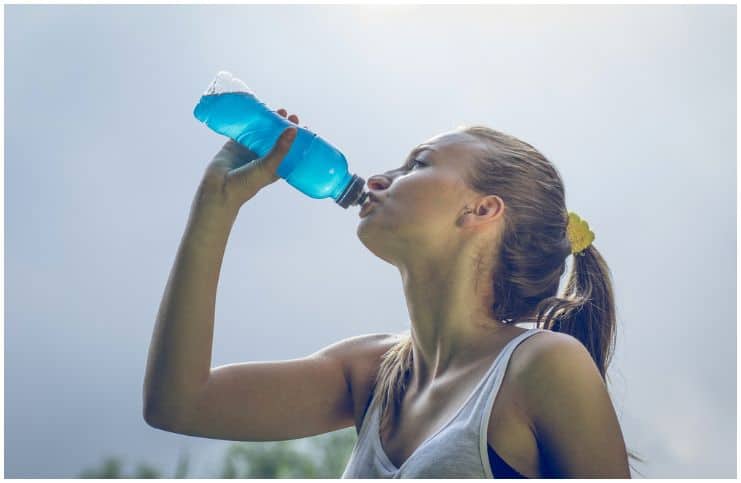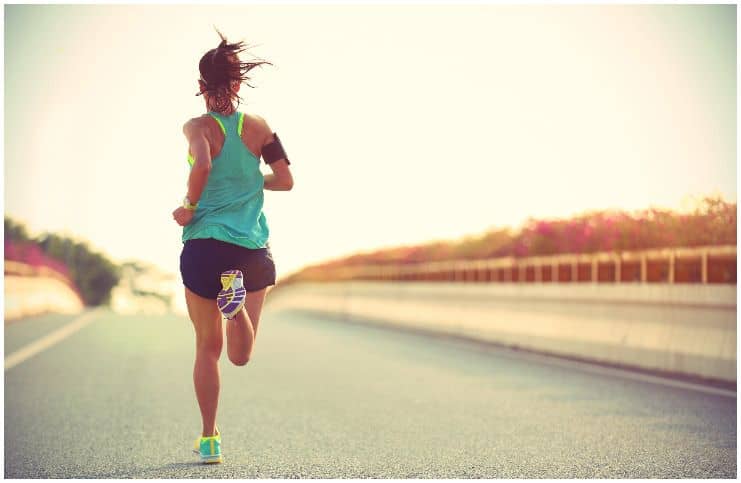Powerade vs Gatorade: Which Is Better?
Gatorade and Powerade are currently the most popular sports drinks that focus on replacing sugars and electrolytes in the body.
Electrolytes are responsible for regulating the body’s muscle and nerve function, blood pressure, hydration, blood pH, and rebuilding damaged tissue.
So, which one is better?
Powerade vs Gatorade review:
Gatorade Facts
It is considered one of the first sports drinks that is created to replenish electrolytes that are lost through sweat during intense physical exercises.
It was developed in 1965 by the University of Florida after an assistant coach there asked scientists to investigate why his football players (named the Gators) were having adverse effects from heat-related sickness like dehydration.
They found that these football players were losing fluid and electrolytes with exertion but not replacing them properly.
In 2001, PepsiCo bought this drink, and it is presently distributed in more than 80 countries.
Sugar
A 240-milliliter serving contains about 14 grams of sugar (representing about 6 grams per 100 milliliters, or 6 percent). It uses sugars derived from glucose, which is a simple sugar used for absorption.
Simple sugars are also preferable to complex sugars after an exercise session when the muscles are primed to replenish glycogen stores. A 32-ounce bottle of this drink weighs in a staggering 14 teaspoons of sugar.
Sodium
The sodium content is about 450 milligrams per liter. Hyponatremia is a serious condition that appears when your blood has an abnormally low level of sodium. The main cause is dehydration, but it can also be caused by overhydration.
Interestingly, when Harvard researchers studied a group of marathon runners, they found that 13% had hyponatremia and that those marathonists who had been consuming sports drinks were just as likely to have this condition as those who had been drinking just water.
Minerals and Vitamins
This drink provides 30mg/8 fl. oz. of potassium. This mineral is important for muscle control, regulating blood pressure, and nerve functions.
Types
Some of the most popular flavors of this drink include – Cool Blue, Glacier Breeze, Fruit Punch, Lemon Lime, Orange, Riptide Rush, and a variety of zero-calorie drinks.
In 2019, it was announced that Gatorade is preparing to launch its latest product platform in 2 decades – Bolt24.
According to Brett O’Brien, Gatorade’s senior vice president:
“We call it Bolt24 because it’s that 24 hours a day of athlete preparation, that’s where Bolt comes in and really does an amazing job.”
Powerade Facts
In 1988, the Coca-Cola Company released this drink. Its main competitor is PepsiCo’s Gatorade.
Powerade claims to:
“replenish four electrolytes lost in sweat.”
Powerade is the official sports drink of:
- Club Atlético River Plate;
- Independiente de Avellaneda;
- The Australian Rugby League team;
- Club Universidad de Chile;
- PGA Tour;
- Rangers F.C.;
- NASCAR.
In 2019, it was the official sports drink of the ICC Cricket World Cup.
Sugar
This drink is 8 percent sugar, more exactly, a glucose polymer, which is known as maltodextrin. Maltodextrin provides long-lasting energy that can help in increasing activity and performance.
Sodium
This drink contains 225 milligrams of sodium per liter.
Minerals and Vitamins
This drink provides 2 important electrolytes: calcium and magnesium.
For instance, without magnesium, the enzymes that enable muscle protein synthesis are impaired, compromising recovery, strength, and hypertrophy.
Furthermore, it contains 10% of the daily recommended intake of vitamins B3, B5, B6, and B12.
Types
Some of the most popular flavors of this drink include – white cherry, grapefruit, orange, lemon-lime, blue raspberry, fruit punch, melon, black currant, and blood orange.
Market Share & Sales
The United States market is occupied by major brands in which Gatorade has about 77 percent share and Powerade has approximately 20 percent share.
Also, BodyArmor has about 5 percent of the sports drink market. BodyArmor is produced with vitamins, potassium-packed electrolytes, and coconut water; however, it doesn’t use high-fructose corn syrup or artificial colors.
Using Sports Drinks When You Are Sick?
These drinks are effective and safe for the correction of dehydration and relief of symptoms associated with stomach flu or viral gastroenteritis, according to a 2006 article, that was published in the “Journal of Parenteral & Enteral Nutrition.”
Side Effects of Sports Drinks
The second ingredient in sports drinks (after water) is sugar. While natural sugars are healthy, added sugars (without fiber) are problematic, as they can lead to obesity, tooth decay, and coronary heart disease.
There are also numerous other completely unnatural substances, such as – gum arabic, sucrose acetate isobutyrate, acesulfame potassium, and glycerol ester of rosin.
Acesulfame K also referred to as ace K, acesulfame potassium, or E950 (in the European Union), is an artificial sweetener. Ace K is approximately 2/3 as sweet as saccharin, about 200 times sweeter than table sugar, and 1/3 as sweet as sucralose.
There is strong evidence that acetoacetamide, a substance that is created in the human body as it breaks down this artificial sweetener, can lead to thyroid damage.
Gum Arabic is a complex polysaccharide indigestible to both animals and humans. In 1970, it was considered a safe dietary fiber by the FDA.
It is used as an emulsifier and thickener in many canned foods, dairy products, soft drinks, soybean products, syrups, hard gummy candies, essential oils, and sports drinks.
According to studies, gum Arabic can cause allergic reactions in some people, with symptoms including – skin irritation and severe respiratory problems.
Lastly, there is the risk of developing hypervitaminosis A due to ingesting too much vitamin A. Hypervitaminosis A can lead to headaches, fatigue, dizziness, and nausea.
Bottom Line
Sports drinks are not a good drink to intake for a sedentary person. It is only useful for an athlete that needs to replace electrolytes.
Moreover, if you practice physical exercise for 60 minutes or under, consuming water is sufficient. There is no need to consume sports drinks.
In addition, for children, whether playing soccer or other types of physical activity, foods like fresh vegetables and fruits are the best source of electrolyte and carbohydrate replacement, and water remains the best source of hydration.
More importantly, coconut water after exercise will give you the same benefit of replenishing electrolytes as these sports drinks (even better), but there’s no doubt, with no adverse effects.
For example, coconut water contains 12 times the potassium as most other sports drinks, doesn’t contain any added refined sugars or chemicals, and contains naturally occurring minerals and electrolytes, such as phosphorus, magnesium, and calcium, plus dietary fiber.
Moreover, for professional athletes doing prolonged physical exercise (the type of exercise that depletes their sodium stores as they soak themselves in sweat and drain their blood sugar), adding some sodium and sugar back does help.
In conclusion, Gatorade contains fewer carbohydrates and higher sodium levels and is best for longer exercise sessions (more than 3 hours).
Powerade has lower electrolyte concentrations and more carbohydrates, hence, it is better for exercise shorter than 2 hours.
READ THIS NEXT:
10 Methods To Relieve Dry Nasal Passages
What To Eat Before And After A Colonoscopy Procedure
References http://www.nejm.org/doi/full/10.1056/NEJMoa043901#t=article https://jissn.biomedcentral.com/articles/10.1186/s12970-014-0046-7 http://healthyeatingresearch.org/wp-content/uploads/2013/12/HER



